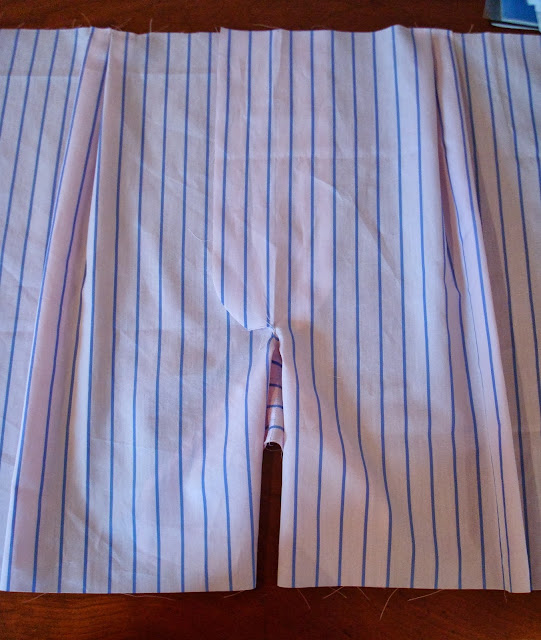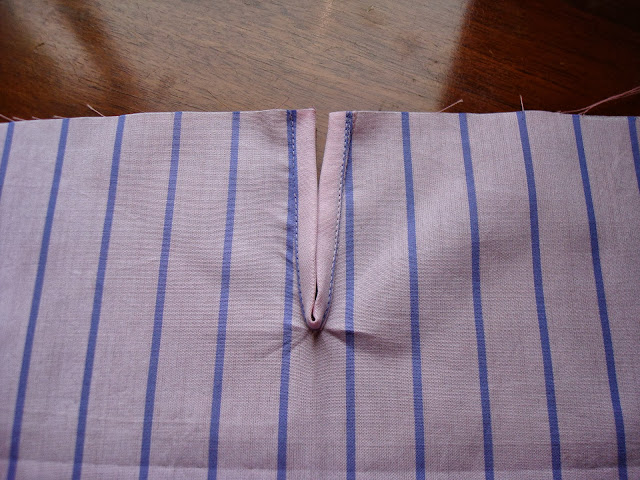After successfully sewing the
onesie for The Much Beloved I thought I deserved some night attire of my own. I couldn't see myself in a one piece. Too reminiscent of overalls - there would be real danger of me attempting an oil change in one of those. I took a fancy to something more old school (or should that be skool?).
McCall 8372 is excellent value as a pattern. Just look at the many garments one can make with it. I wonder if it was one of the last non-multi-sized patterns. I ordered the large based on my 42 inch chest measurement.
Those of you who have read the blog will know that I am keen on free or very cheap fabric especially when practicing on a new pattern. Regulars will also know that I am quite partial to repurposing duvet covers.
I have (had) this wonderful 100% cotton Conran duvet cover bought at Heel's ages ago. It did years of service on my bed but it must be at least four since I've used it and it now doesn't go with anything. It's a gorgeous cotton twill ticking and much washing has improved its beautiful soft handle. I thought it would make a great nightshirt.
The pattern has clear instructions. Diagrams backed up with directions which take into account whether you are using a straight stitch or zig-zag machine. There is sufficient seam allowance for the shoulder, armscye, and side seams to be flat felled. The neck facings are turned under and top stitched to the wrong side for a neat finish.
The shirt features a rounded patch pocket on the left front. I made a bit of an effort to get the stripes to match up. I missed having reverse feed when I edge stitched the pockets.
The applied cuff bands are cut on the long grain which I think makes these stripes really pop in a good way. They are finished off with a nice bit of edge and top stitching courtesy of the 28K.
The one point where the pattern is slightly vague is when it calls for a five eighths hem giving no further instructions. I took this to mean - turn under a quarter inch, press, turn over a further three eighths so that the raw edge is enclosed within the second fold, press again, pin and edge stitch in place. I hope I got it right?
The curved hem creates a shallow split where it meets the side seam. I had to do a certain amount of fudging where the flat fell and the narrow hem meet. It looks a lot better from the RS and is holding up to washing so far…
I made the buttonholes and sewed on the buttons using the Singer 401G and Singer slant buttonholer. Results are consistent. The 28K showed off a bit more with the topstitching on the front placket.
The buttons themselves are vintage brace buttons from Ede and Ravenscroft, robe makers to the Queen. High end or what? They are rather bigger than the half inch shirt buttons recommended by the pattern but I think they are more in scale with the relaxed characteristics of the night shirt and the colour is perfect.
The finished garment is roomy but then I suppose it should be. The fabric feels great - soft, comfy and cosy. I made this nightshirt for a bit a giggle but have ended up wearing it quite a lot. I used nearly half of a double sized duvet cover, thread left over from another project and three of six buttons from some worn out suit trousers. So in theory my night shirt cost me only my time and I still have enough of everything left to make another.
"Hey - that's really nice. I can't tell that it didn't come from a store," said The Much Beloved. Would that be the ultimate compliment by any chance?

























































